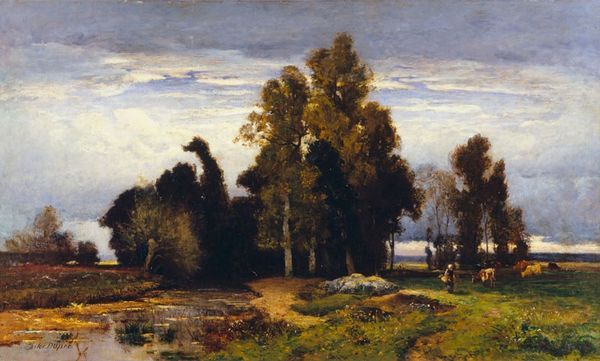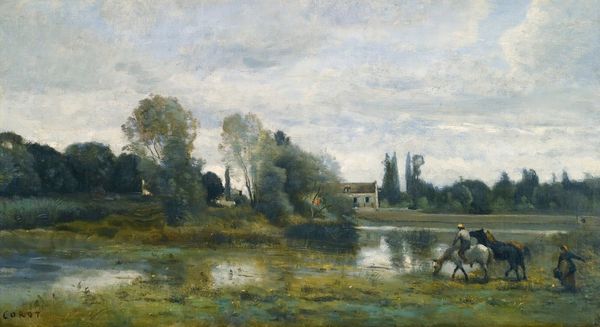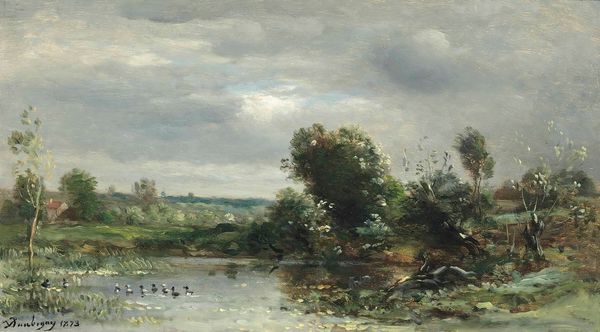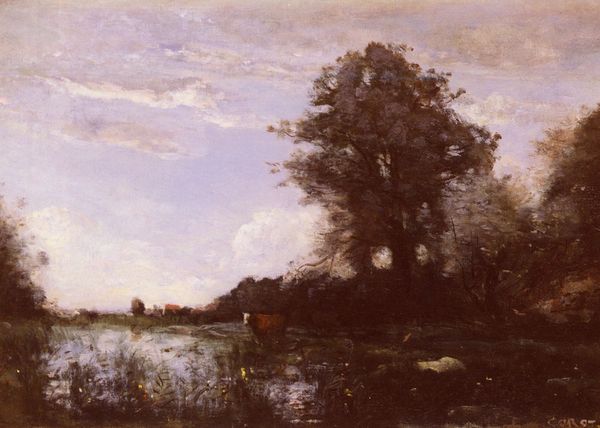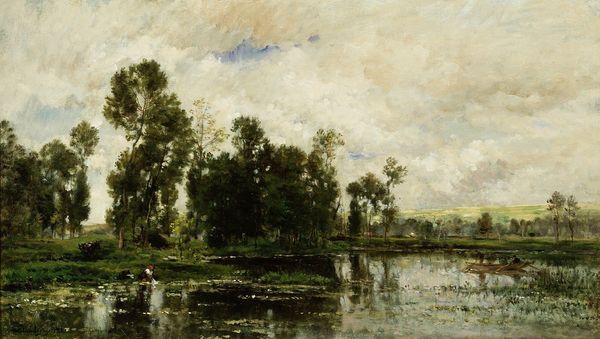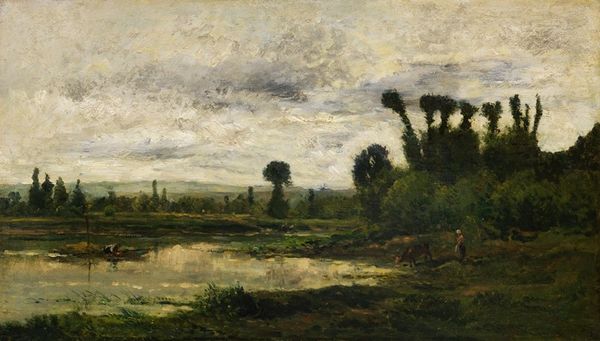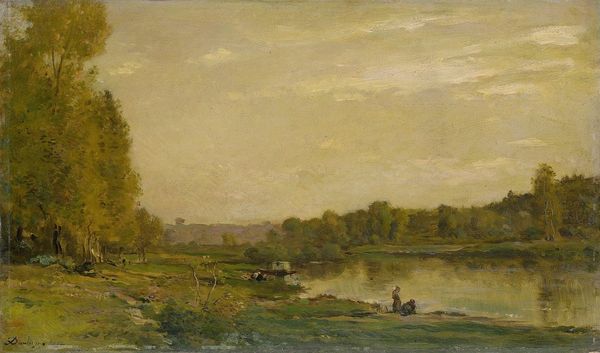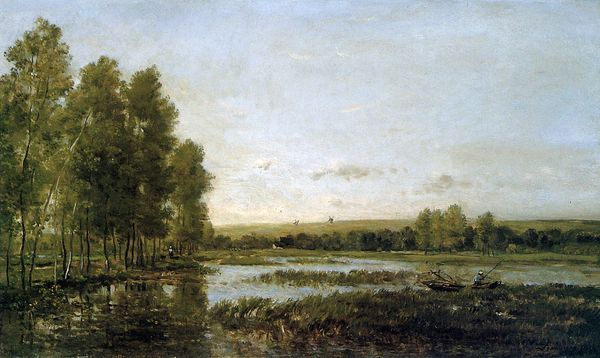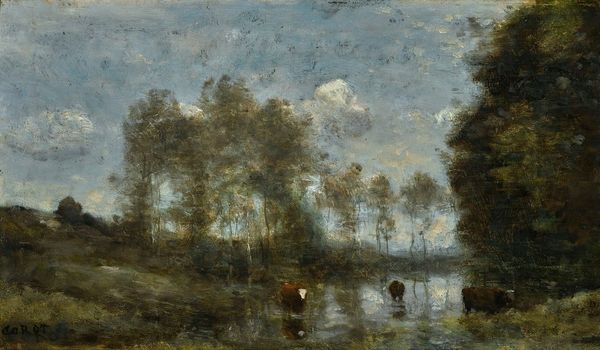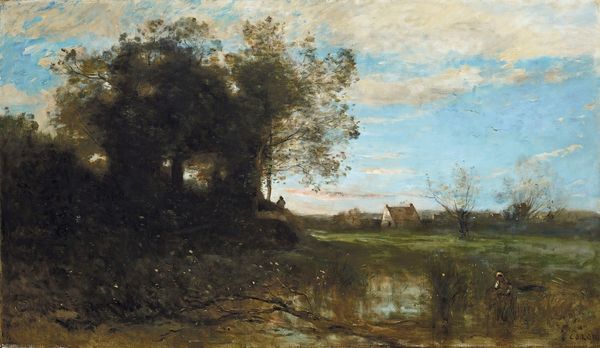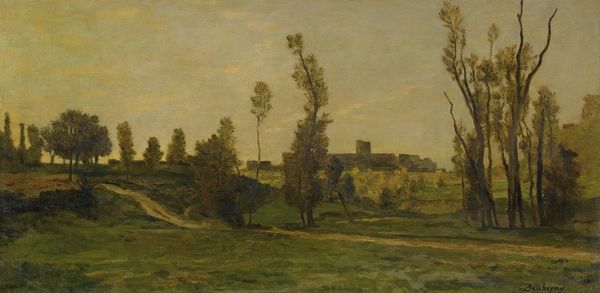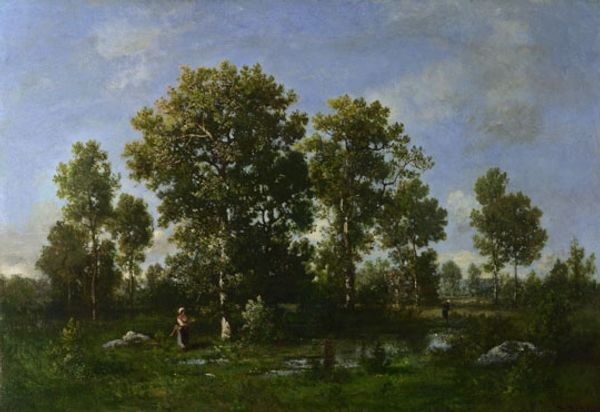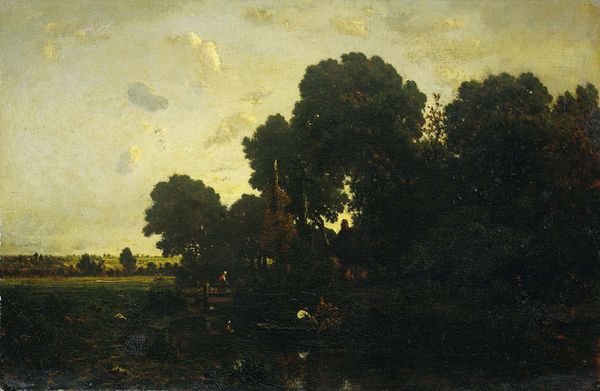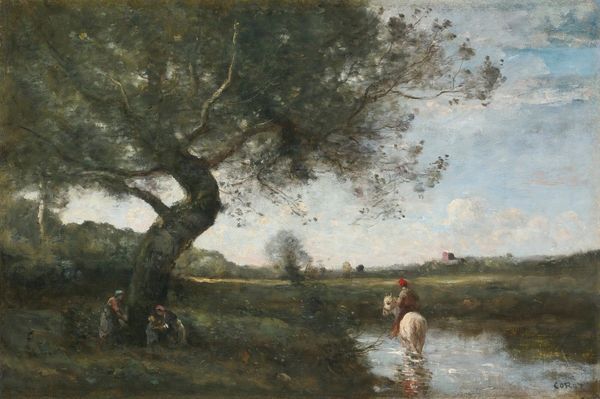
Copyright: Public Domain: Artvee
Camille Corot made this painting, Laveuses au bord de l’eau, in 19th century France. On the face of it, we see a serene landscape with women washing clothes by a river, a typical scene of rural life. But Corot was a complex figure working during a time of significant social change. Corot was associated with the Barbizon School, a group of artists reacting against the dominant academic painting style. While the French Academy favored historical or mythological scenes, these artists ventured into the countryside to paint landscapes from direct observation, often including the working class. However, it is essential to remember that the Barbizon school were committed to an ideal vision, not to accurate rendering, and that their art works were destined to find their place in the bourgeois salon. What is the public role of such art? Historians delve into exhibition records, personal letters, and critical reviews, and we come to understand the complicated social dynamics of the art world. Art’s meaning is always contingent on its social and institutional context.
Comments
No comments
Be the first to comment and join the conversation on the ultimate creative platform.
